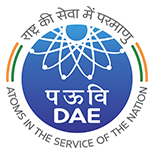- What is Radiopharmaceutical?
-
A radiopharmaceutical is a chemical substance that contains radioactive atoms within its structure and is suitable for administration to humans for diagnosis or treatment of disease.
- What is Nuclear Medicine?
-
Nuclear medicine is the medical specialty, which utilizes the nuclear properties of radioactive nuclides for diagnostic evaluation and / or physiological conditions of the body and provides therapy with unsealed radioactive sources.
- How is it different from radiation therapy ?
-
In radiation therapy an external radiation beam or sealed sources are used for destroying the cancerous tissue whereas in nuclear medicine the radiopharmaceutical is administered orally and then using a gamma - camera, image of a particular organ is taken for diagnosis of the disease. The therapeutic radiopharmaceuticals contain radionuclide, which emit particulate emission which help in destroying the unwanted (cancerous) tissues.
- What is scintigraphy or SPECT ?
-
In scintigraphy the gamma - rays emitted by the radionuclide present in the radiopharmaceutical interacts with the NaI (Tl) crystal present in the gamma- camera imaging system and the signals emitted are processed with the help of computers to get the image of the organ. Where and how much (qualitative and quantitative) of the injected radiopharmaceutical has concentrated or not (hot spot or cold spot) when compared to the normal uptake limits, thereby diagnosing the problem both related to the morphology and function of that organ. These studies when performed over a period of time after the administration of radiopharmaceutical, give dynamic picture regarding the dynamic functioning status of the organ like ejection fraction of the heart in MUGA study. In SPECT (Single Photon Emission Tomography ) the camera rotates through 3600 around the organ and visualize the organ in three dimensions, this enables to get the slices of the image of the organ and thereby improving the resolution.. This is especially useful for the bulky organs so that the lesions deep inside the organ can be visualized.
- Why 99mTc is the preferred radioisotope for diagnostic studies ?
-
Tc-99m is preferred because it has many favorable properties required for use in nuclear medicine, which are as follows:
- 140 keV gamma energy of 99mTc is ideally suited for efficient detection and giving high- resolution pictures with the gamma-camera. The loss due to attenuation by the body tissue is also low at this energy.
- The decay of 99mTc (T1/2 6 hrs) is associated with insignificant particulate emission and hence 99mTc radiopharmaceuticals typically containing even upto 30 -40 mCi can be injected safely into patients. Such large dose helps in getting better quality images and thereby more reliable information.
- The 6-hr half -life of 99mTc is well suited for most of the nuclear medicine studies.
- The versatile chemistry of Tc allows the chemical formulation of a variety of labeled compounds for multifarious applications.
- 99mTc can be conveniently obtained from a generator system of 99Mo-99mTc
- The parent 99Mo is available at low cost and hence the cost of the final radiopharmaceutical preparation also works out to be low.
- What is a Kit ?
-
Kit contains the essential ingredients for the preparation of a particular radiopharmaceutical, TCK cold kits or assay of a particular hormone RIA kit.
- What is TCK Kit ?
-
These are kits for the preparation of a particular 99mTc-radiopharmaceutical. Generally a kit contains lyophilized formulation of premixed reagents of ligand, reducing agent, Sn (II) as SnCl2.2H2O, lyoprotectant, stablizer and additives in appropriate concentration and pH. This kit, when reconstituted with sterile sodium pertechnetate, in the manner specified for the product, yields the desired radipharmaceutical in sterile injectable form.
- Does radiation dose from a radiopharmaceutical cause any harmful effects ?
-
The radiation dose generally received, by a patient, during diagnostic nuclear medicine procedure is very low and well within the limits. It is often less than and at times comparable to CAT scan doses. It is safe. In case of therapeutic procedures, the benefit to the patient is always very much greater than the risk.
- What is radioimmunoassay (RIA) and immunoradiometric assay (IRMA) ?
-
Radioimmunoassay (RIA) is a versatile in-vitro technique for the measurement of hormones, vitamins, drugs and other substances present in biological fluids, in most of the cases in serum. A slight variation in the above technique used for the same purpose is known as Immunoradiometric assay (IRMA) which offers better sensitivity, specificity and range.
- What is the principle of RIA ?
-
Unlabelled analyte competes with radiolabelled analyte (usually labelled with I-125) for the limited binding sites available on the antibody molecule made specifically for the analyte of the interest. At the end of reaction labelled analyte bound antibody is separated and measured for the radioactivity. Amount of the radioactivity separated is compared with values of known analyte standards and the concentration of analyte present in the sample is calculated.
- What is the principle of IRMA ?
-
In IRMA, two different antibodies, capable of binding simultaneously to the analyte are used. One of these is immobilized on a solid support and serves to effectively extract the analyte from the sample. The second antibody is radiolabelled and serves to convert the extracted antigen into a radioactive product. As the complex is attached to the solid support, the 'free' radiolabelled antibody in the solution can be easily separated out from that bound to the analyte. Amount of the radioactivity separated is compared with values of known analyte standards and the concentration of analyte present in the sample is calculated.
- Where is RIA/IRMA applicable ?
-
RIA/IRMA finds application in endocrinology, haematology, pharmacology, forensic medicine and oncology. Some of the important hormones being analyzed for detection, diagnosis and monitoring of the diseases are: Thyroid related hormones (Trioidothyronine T3, Thyroxine T4, Thyroid Stimulating Hormone, TSH etc.), Fertility related hormones (Luteinizing hormone, LH, Follicle Stimulating Hormone, FSH, Prolactin, Human Chorionic Gonadotropin, HCG), steroids (Progesterone, testosterone etc.) and other hormones such as Insulin and Human Growth Hormone (HGH).
- Are There any other types of immunoassay kits available that do not make use of radioisotopes ?
-
Yes, there are immunoassay kits available for the detection and estimation of substances that make use of markers other than radioisotopes such as enzyme immunoassay (EIA), fluroimmunoassay (FIA), chemiluminesence assay. Among these, assays based on radioisotopes are rugged and affected least by the interference of other substances present in serum. Although the sensitivity offered by fluroimmunoassay (FI) and chemiluminesence assay are higher, sensitivity offered by radioisotopic immunoassays are more than adequate for almost all hormones of clinical relevance.












